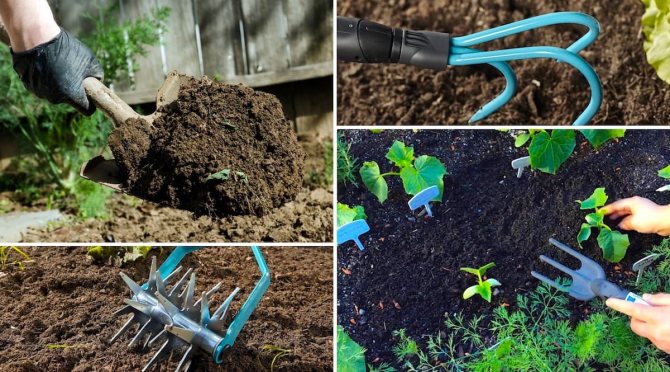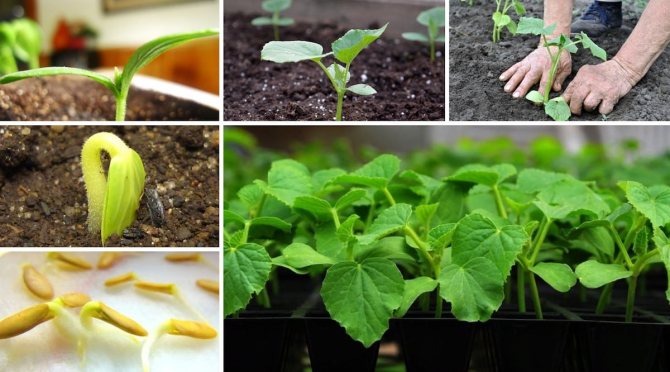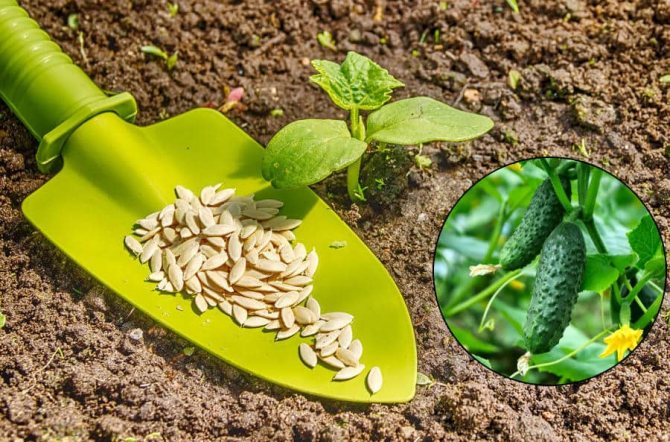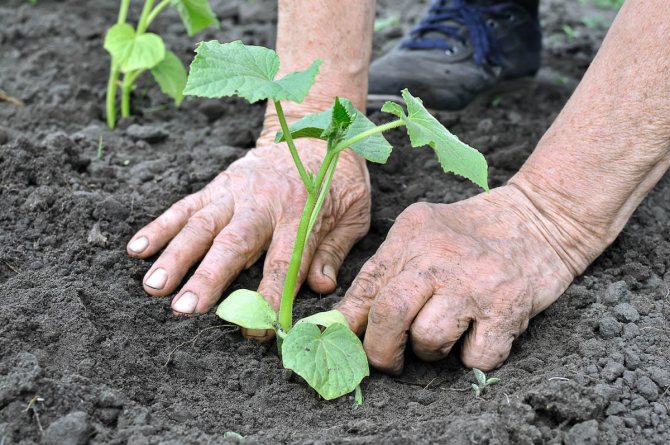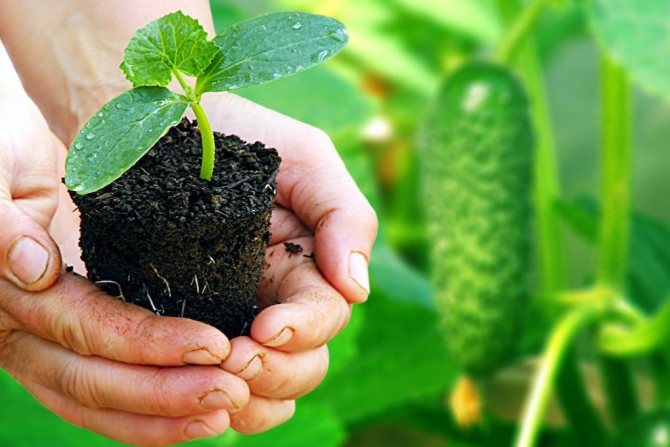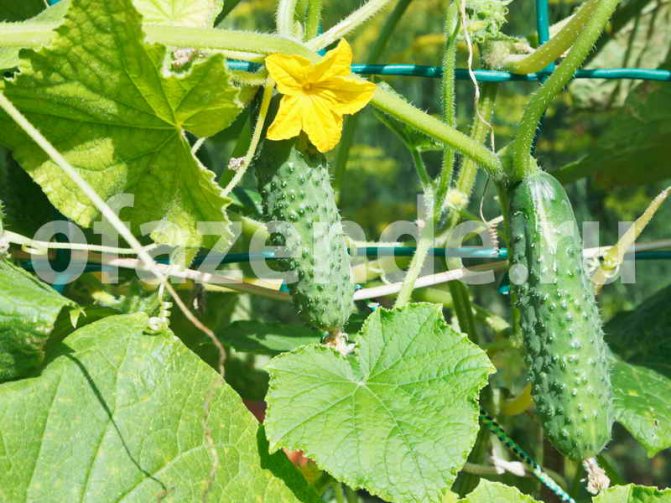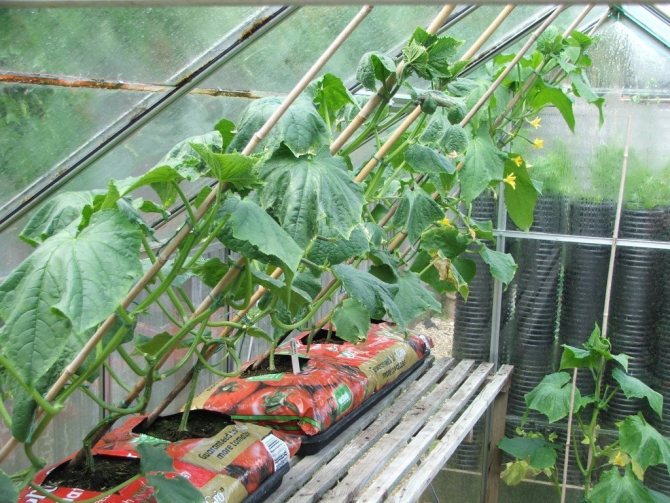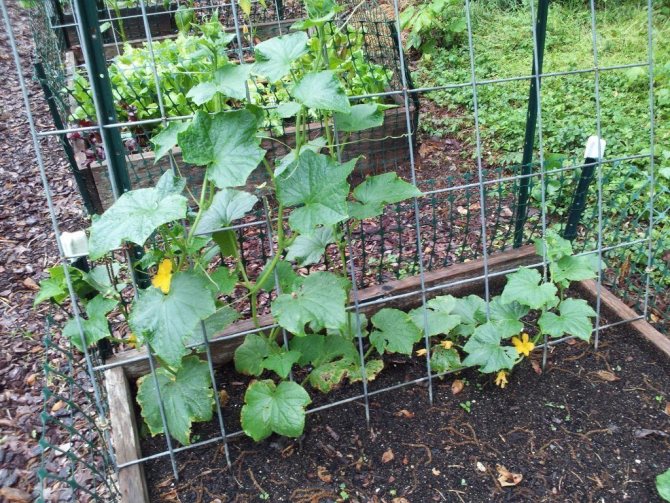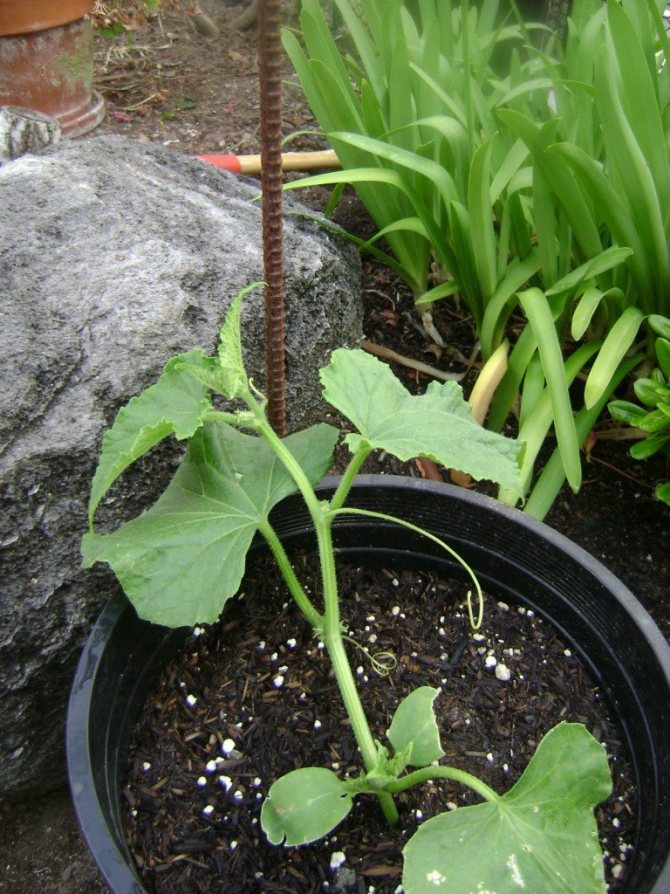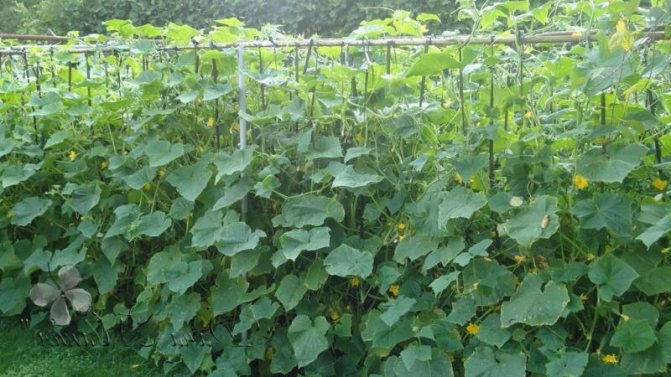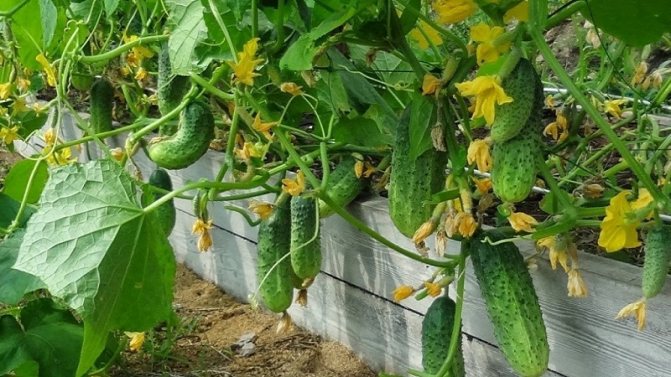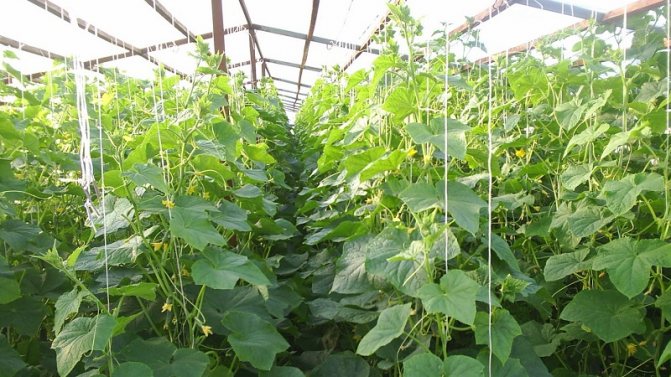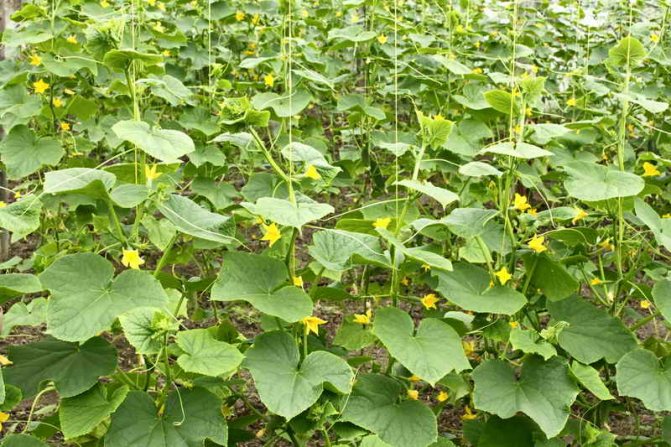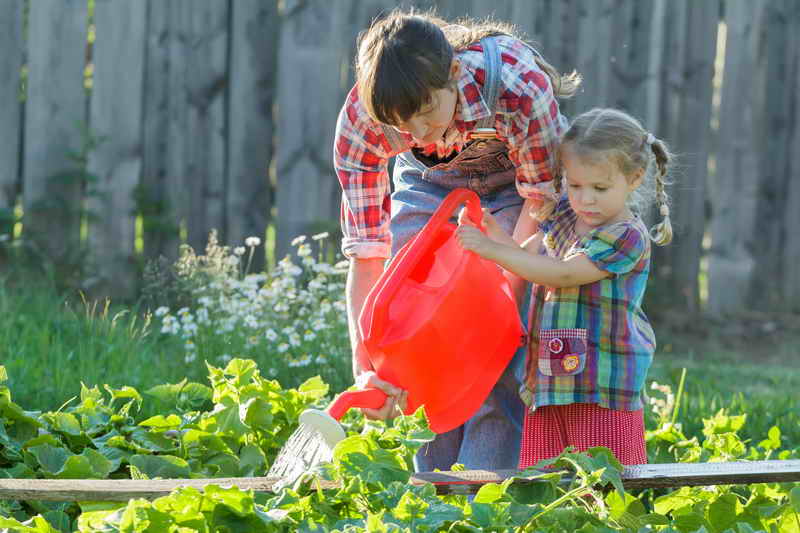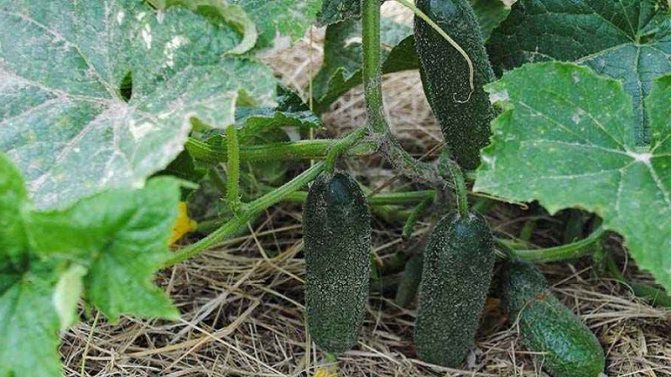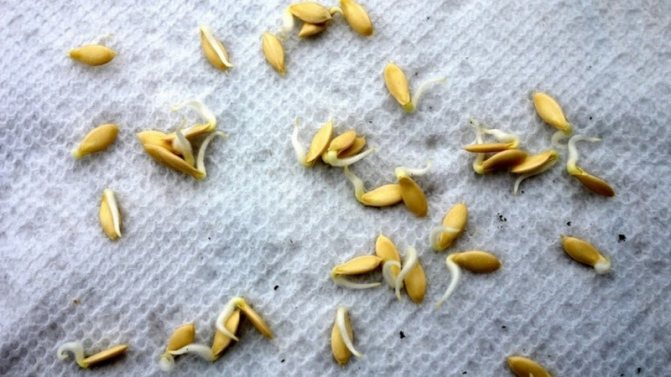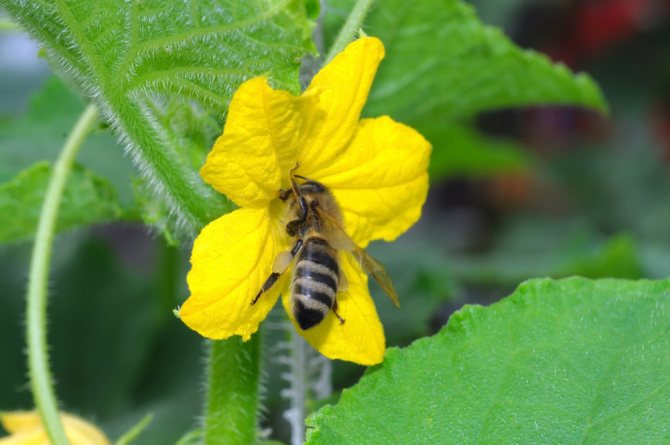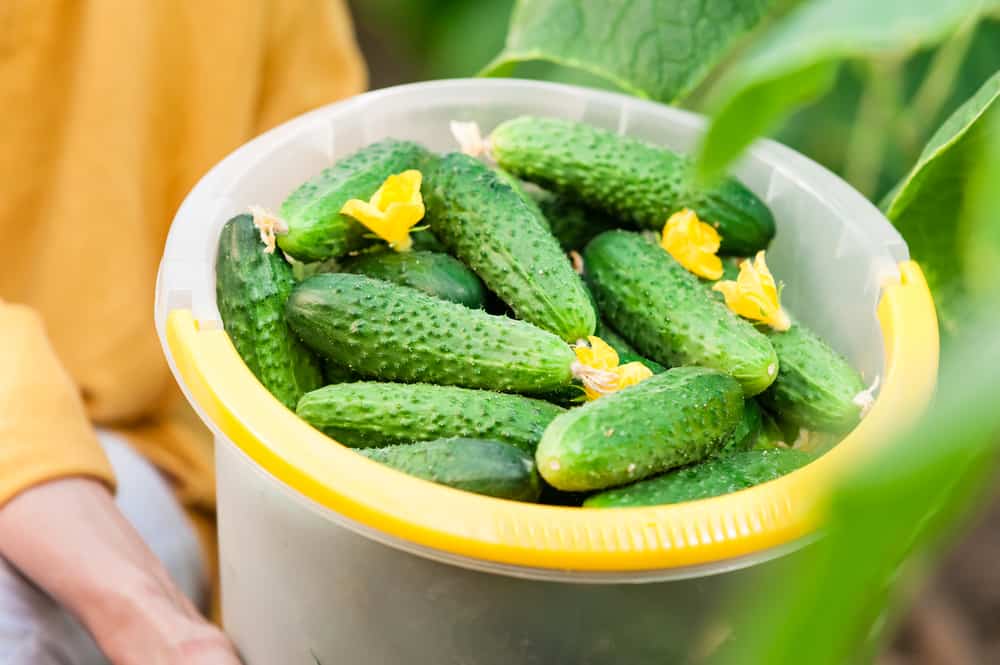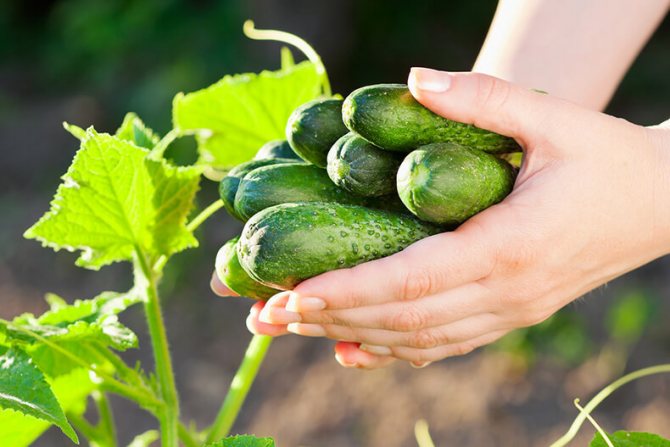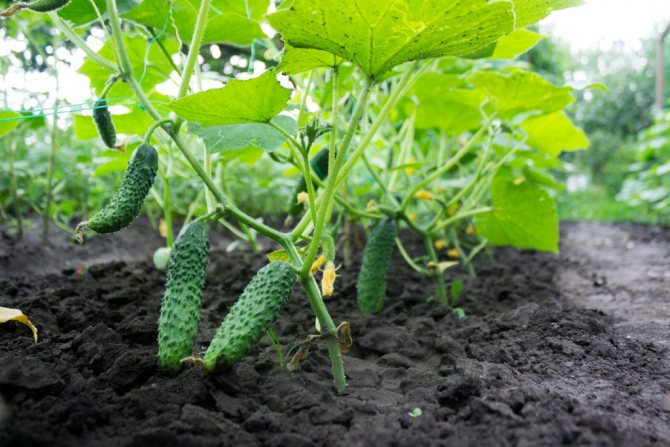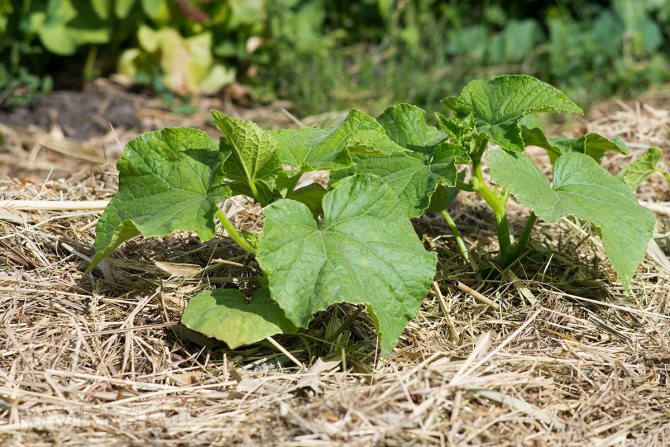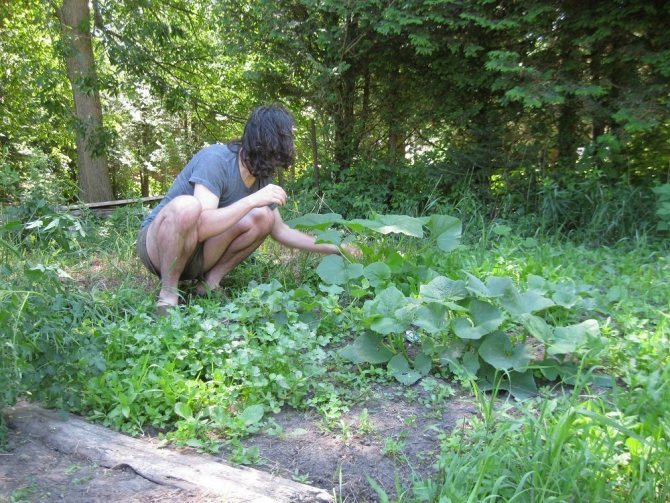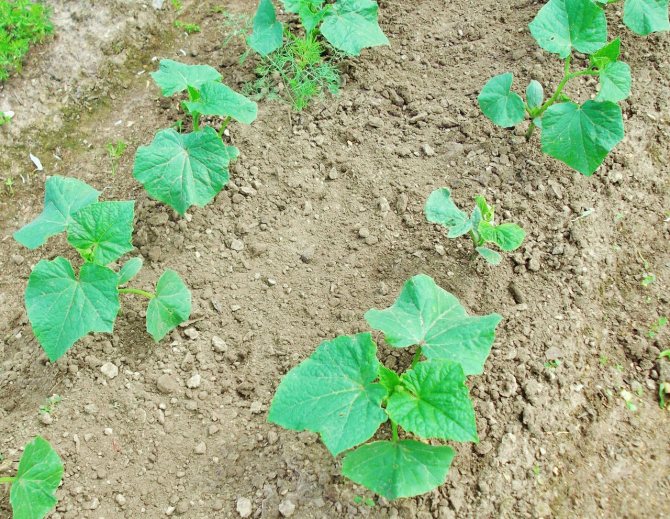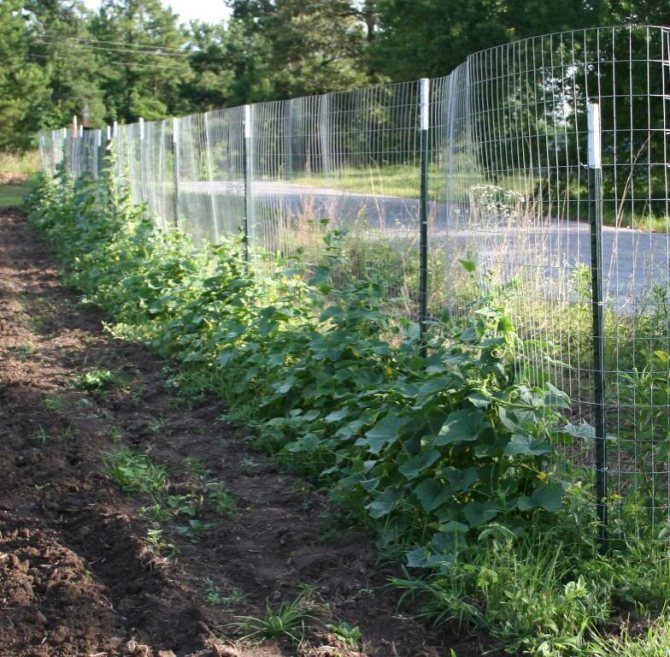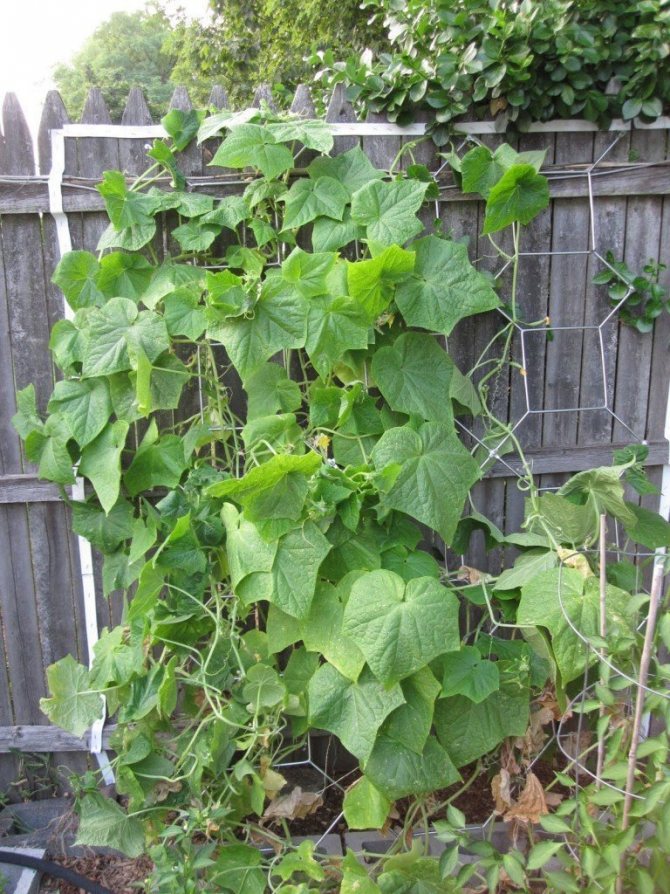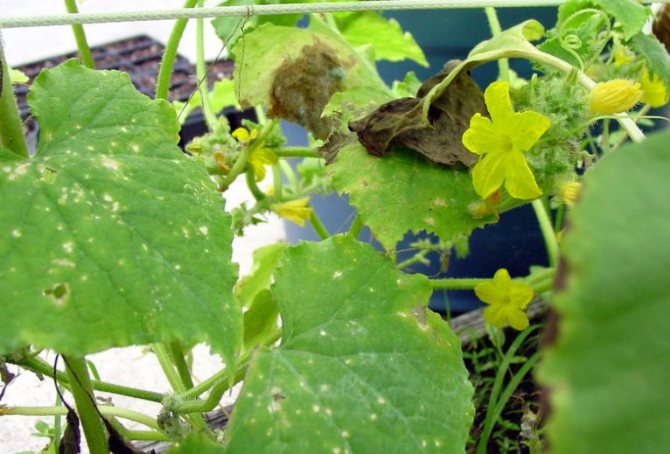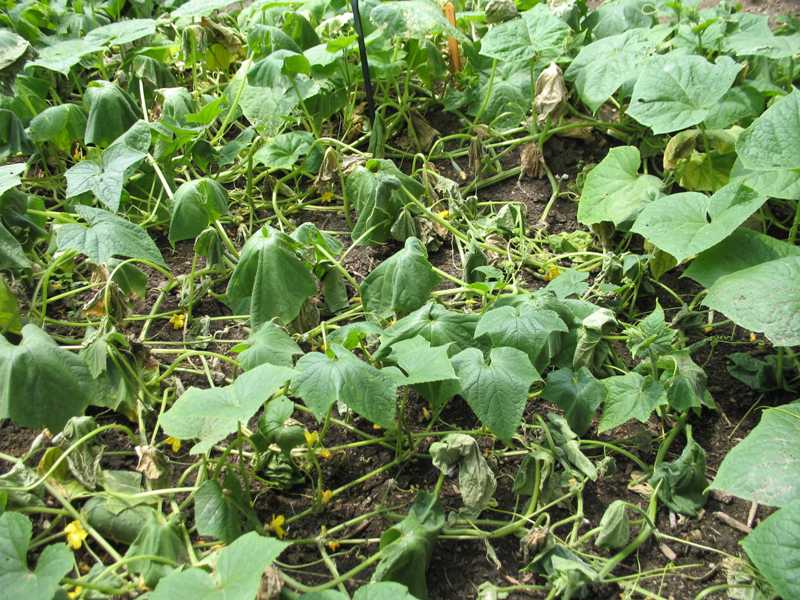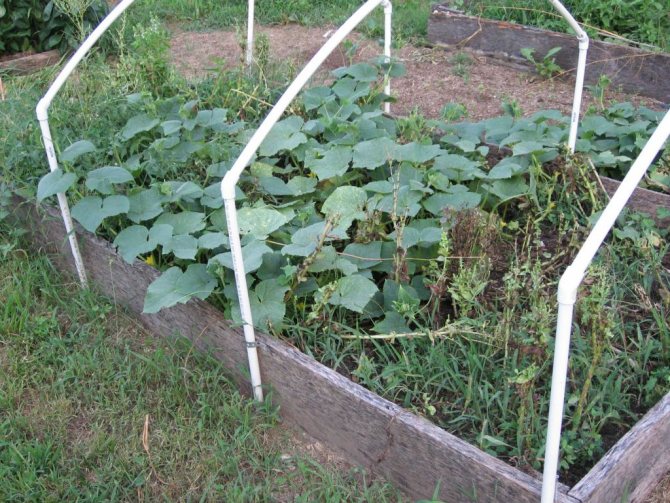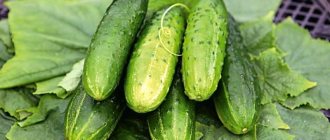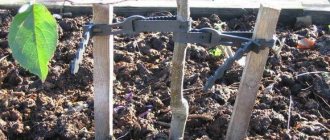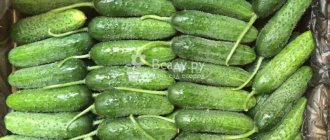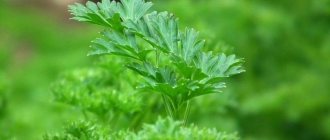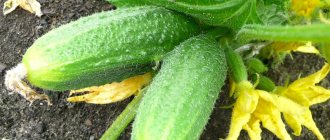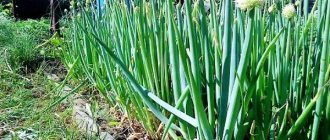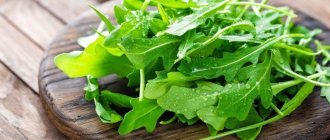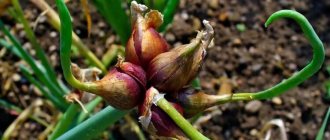Cucumbers are one of the favorite vegetable crops in our country. Cucumber is famous for its low calorie content and rich mineral composition. This vegetable works well fresh, pickled or salted, and can be used as a wonderful skin moisturizer.
In warm climates, it is possible to grow cucumbers in the open field, and for cooler climates there are greenhouses. In the article, we will consider how you can grow a rich harvest in both cases: we will learn the subtleties and nuances of plant cultivation both in the open air and in greenhouses / hotbeds.
Preparation and selection of a landing site
In order to harvest a large harvest of cucumbers, it is important to take care of choosing a good location for the crop. Cucumbers will grow better after potatoes, tomatoes, legumes, peppers and cabbage. It is not recommended to plant them after other pumpkin crops earlier than 5 years later, since related crops impoverish the soil, using trace elements necessary to obtain a rich cucumber harvest.
When choosing a landing site, they adhere to the requirements:
- The site must have good lighting; the beds must not be allowed to be shaded by trees or buildings.
- The place must be protected from winds. To protect the cucumber garden from the wind, tall plants can be planted nearby: corn, sunflower and others.
- The size of the plot is important. The distance between the bushes should be at least 50 centimeters to ensure free growth. If the plot is small, it is better to place the cucumbers in a checkerboard pattern.
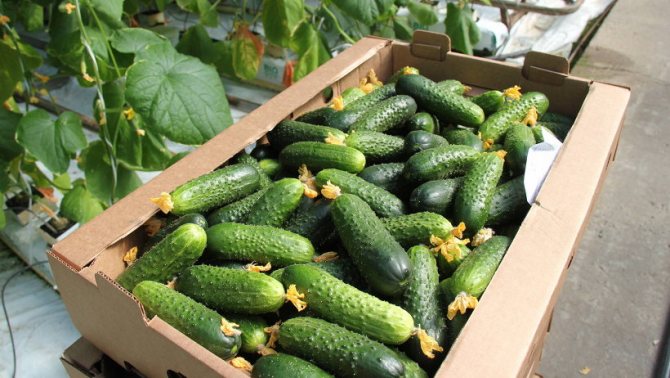
How to grow a good harvest of cucumbers
Feeding
To get a lot of good harvest, the plant was high-yielding, there are certain requirements for a fertile substrate. The soil must be well-drained, cultivated, fertile and structured.
Also, the soil should be rich in vitamins and minerals. It should be saturated with organic trace elements that enter the soil along with vermicompost, bird droppings, garden compost, peat, wood ash. And also the soil should contain minerals supplied together with mineral fertilizers.
An important role is played by the introduction of additional feeding elements, by irrigation or fertilization in a dry form (it is applied under the root system or by irrigating the foliage).
Such fertilizing is important throughout the growing season, the first fertilization procedure is carried out at a time when the first pair of true leaves appear on the plants, the last when fruiting ends.
Soil preparation for planting
How to grow a good harvest tomato
Soil preparation begins in the fall. To enrich the soil, 5 kg of manure and 30 g of potassium-phosphorus fertilizers are applied per 1 sq. meter. Then the soil is well dug to a depth of 40 cm.
Advice! The acidity of the soil can be balanced by the introduction of ash or lime at the rate of 200 g per 1 sq. meter.
With the onset of spring, the soil is dug up again, adding 1 sq. meter 3 kg of humus and 50 g of mineral fertilizers. If the soil was not prepared in the fall, an increased amount of humus is introduced during the spring digging. If humus is not enough to fertilize the entire site, it is added directly to the planting holes.
How is the strengthening of the root system carried out
The ability of the plant to provide ripening fruits with an abundant amount of useful micro and macro elements will directly depend on how branched the roots of the bush are.
When loosening to a shallow depth after heavy rain or abundant watering, you can increase the yield, since the soil mixture is saturated with oxygen molecules, as a result of which the plant growth is stimulated, allowing you to increase the next yield from seeds and bushes per square meter. meter.
Harvesting will delight you with its abundance for every square meter. Measures to strengthen the root system include easy hilling of each bush. Such manipulations must be carried out very carefully, since often the roots are located in close proximity to the surface of the earth.
In the presence of a small amount of additional soil around the plant, irrigation water will quickly be absorbed, but at the same time it will stay in the bushes for a long time.
You can also highlight a certain option for creating an additional adventitious root system after the entry of seeds. This option is very effective if the root system is affected by putrefactive processes.
If there are suspicions of diseases of the root system, the recommended manipulations are as follows:
- Half of the ovaries should be removed.
- Next, the stems must be lowered to the ground.
- The lower section of the lashes is sprinkled with a previously irrigated fertile substrate.
After a certain time, the formation of young roots is observed, they then give an opportunity to grow, and further develop, and bring a high yield.
Planting culture
How can you speed up the fruiting of cucumbers? Grow seedlings. When it is planted in a permanent place, the harvest will ripen 2-4 weeks earlier than with a normal planting.
Seed preparation for planting
How to get a good potato crop
For sowing, use only full-weight seeds. Then they need to be warmed up. For this, the seeds are kept near heating devices for about a month. The optimum temperature for warming up is +25 degrees.
On a note! Warming up increases the number of seedlings, accelerates fruiting and reduces the number of barren flowers.
Then the seeds are disinfected: they must be soaked in a weak solution of potassium permanganate or tincture of garlic for half an hour, then rinsed.
The seeds wrapped in cloth are kept for 12 hours in a nutrient mixture of 1 liter of water, 1 teaspoon of ash and the same amount of nitrophoska. After soaking, the seeds are washed, placed in a moist material and left to swell for two days at a temperature of + 20 degrees.
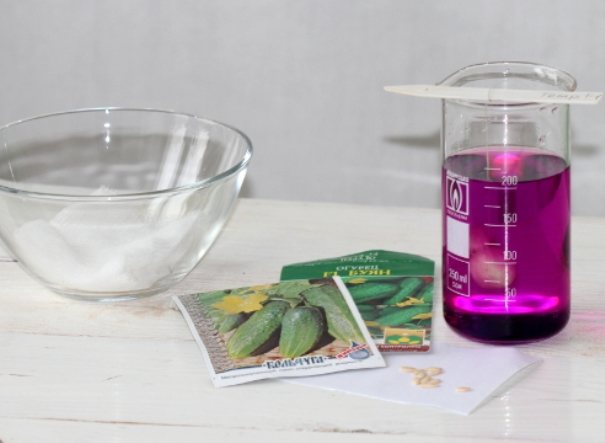

Soaking cucumber seeds
Important! The seeds should hatch a little, not sprout.
Cucumber seeds are placed in the refrigerator for 24 hours before planting. Preparatory measures are not carried out with seeds of hybrids, since they have already been processed by the manufacturer.
Growing seedlings
Seeds are sown for seedlings in April. Seedlings are planted in low 12 cm containers. To prepare the soil, sawdust, humus and peat are mixed in a 1: 2: 2 ratio. For 10 liters of the resulting mixture, add 2 tablespoons of ash and nitrophosphate. 1 sprouted seed is placed in the container to a depth of 1 centimeter. Watering the seedlings is necessary once every 7 days. In phase 2 of these leaves, fertilizing with nitrophos or nitroammophos is carried out: 1 teaspoon of fertilizer is consumed per liter of warm water. Seedlings are planted in a permanent place in a month.
Planting seedlings and sowing cucumbers
The planting bed must be dug out in a day. It is recommended to spill it with hot water in which 1 spoon of copper sulfate is dissolved. For 1 square meter, you will need 3 liters of solution. Before planting seedlings, holes are made in the garden bed. The distance between the holes should be at least 50 cm, the depth should be 4 cm.Several seeds are placed in the prepared holes or seedlings are placed.
When planting cucumbers in a greenhouse or under cover, adhere to the following requirements:
- The temperature in the greenhouse should not drop below +18 degrees. A drop in temperature will stop plant growth.
- It is necessary to maintain high humidity - 80-85%.
To maintain high humidity in a greenhouse, for example, made of polycarbonate, a couple of large metal barrels are placed at different ends of the structure. I fill the containers with water. When heated during the daytime, water evaporates and creates the necessary level of humidity. At night, the barrels give off heat and maintain a warm air temperature.
Note. In order to get cucumbers in the greenhouse in winter, the air in it should not be dry.
How to increase the yield of cucumbers - Planting in open ground
Immediately before the cucumbers are planted, the bed is spilled with boiling water and covered with a film, which increases the reproduction of bacteria, which will warm up the soil in the course of their life until the temperature is stable. You can wait 2-3 days after this procedure, but you can sow seeds immediately after watering in warm ground.
You can plant cucumbers in grooves or in a row. The rows are made 70-90 cm long. The depressions are dug 4 cm apart and at a distance of about 20 cm from each other if the cucumbers are grown in open ground. You need to sow two to four seeds into the hole. If both seeds subsequently come out, then they will need to be thinned out.
Cucumber garden care
Herringbone planting of cucumbers
The beds must be kept clean and all weeds must be carefully removed. For the first three weeks, small bushes need to be loosened to a depth of 3 cm.
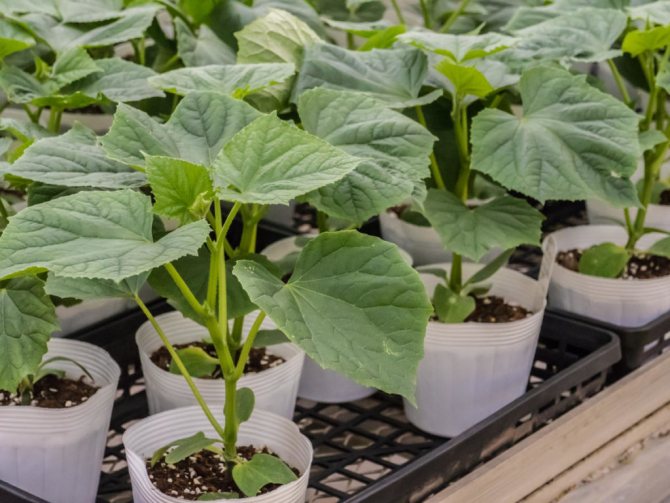

Growing cucumbers by seedling method
Important! The loosening procedure is carried out carefully, trying not to damage the weak root system. When the bushes grow up, the loosening procedure is carried out every week.
Cucumbers need to be tied up regularly. They also do the pinching of the main stem after the appearance of the 7th leaf. This will allow the plant to shoot more side shoots and increase the yield.
Timely collection of fruits stimulates an increase in yield. It is recommended to pick cucumbers at least three times a week.
Watering
The plant loves moisture, so the question of how to grow a good harvest of cucumbers should be answered: by ensuring good watering.
It is better to water it with warm water. Before flowering, cucumbers are watered every 7 days; during the ripening period, the time between waterings is reduced to 3 days.
Important! To improve the ingress of moisture to the roots, loosening is carried out in an unusual way: in the ground between the bushes, punctures are made with a pitchfork with a pitchfork. The culture does not like the strong pressure of water, it can wash out the roots and get on the leaves, causing burns.
Top dressing
In the greenhouse and in the open ground, complexes of mineral and organic fertilizers are used for feeding. Fertilizing cucumbers to increase the yield should be at least 5 times during the growing period:
- The first feeding is done at the beginning of flowering. To do this, potassium sulfate, superphosphate and urea are dissolved in 10 liters of water, 5 g each. A glass of thick mullein or 30 g of sodium humate is added to the resulting mixture.
- When the bushes begin to bear fruit, top dressing is made from 1 tablespoon of nitrophoska and 1 cup of thick mullein, diluted in 10 liters of water.
- For the following fertilizers, use a solution of 10 liters of water, 5 g of potassium sulfate and half a liter of mullein. The solution consumption is 5 liters per 1 sq. M.
You can replace mullein with natural humic fertilizers, for example, Fertility, Ideal.
Correct agricultural technology is the key to success
Growing cucumbers in the ground is a rather laborious process, especially if you want to get a crop higher than the average, and you will not succeed if you do not properly cut the soil. First of all, it is worth taking into account that mulching the soil with decomposed manure, peat and organic matter allows you to get more harvest, but only if you do it 1-1.5 years before planting.
The second point of agricultural technology is harvesting. Do not overdo the cucumbers on the vine and wait until they "ripen".Collect as soon as possible, avoiding yellowing. The sooner you collect them, the more new ones will be tied up - this is worth remembering once and for all. At the same time, you must not damage the vine, since if you step on it, it will begin to supply less organic matter and minerals to the fruits, and they will not develop correctly.
Watering should be nearly constant. In summer, water once in the evening, once in the early morning, or leave the turntable overnight. You cannot water during the day - the leaves will immediately burn. Powdery mildew is the main enemy of the cucumber if the summer is cool. In order not to become a "victim" of powdery mildew, it is necessary to do drip irrigation, or simply let the water go to the very root so that it does not fall on the stem
The best precursors for cucumbers are legumes, since they form a large amount of nitrogen macromolecules in the soil during their growth period. Thus, it remains only to add ammonia and phosphorus fertilizers and you will have everything you need to wait for a large harvest of cucumbers. Potatoes, corn, seeds, watermelon, melon and cucumbers themselves are bad predecessors. After them, you need to give the ground a rest or plant beans, for example.
Pest and disease control
Timely detection of the first signs of disease allows you to take the necessary measures to save plants and crops.
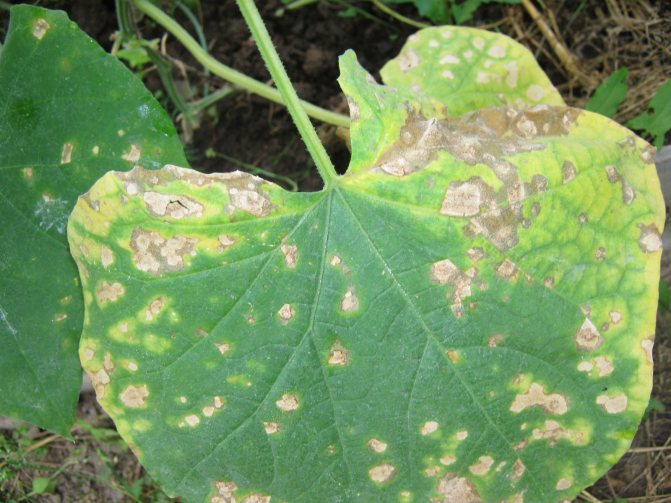

Peronosporosis on cucumbers
Cucumbers are often subject to fungal diseases:
- cladosporiosis. It is characterized by the appearance of dark spots on the leaves. The fruits become crooked, take on a dark shade, their growth stops. For treatment, benzimidazole drugs are used.
- powdery mildew. The first sign is that a white bloom appears on the leaves, after which the plant withers. Powdery mildew is caused by weeds in the garden. Treatment is carried out with fungicides.
- peronosporosis. It manifests itself in the form of yellow spots on the leaves, which lead to the drying out of the plant. Peronosporosis is treated with fungicides.
Additional Information. Seeds collected from plants that have been ill with peronosporosis need additional pre-sowing treatment in a manganese solution.
Of the pests, cucumbers are threatened by spider mites and whiteflies. For treatment and prevention, insecticides are used, and during the period of fruit ripening, the plants are treated with soapy water.
Prevention of diseases and pests of cucumbers:
- To scare off pests, garlic, basil, dill or mustard are planted between the beds.
- Every year, the place of planting of cucumbers should be changed and a complex of mineral and organic fertilizers should be applied.
- It is necessary to observe the crop rotation. Cucumbers are not planted after pumpkin crops.
- Soil disinfection - prevention of attacks by spider mites, ants and whiteflies.
- In greenhouse buildings, windows are regularly opened to create additional ventilation between the plants.
- As a preventive measure, the bushes are treated with a solution of karbofos every 5 days.
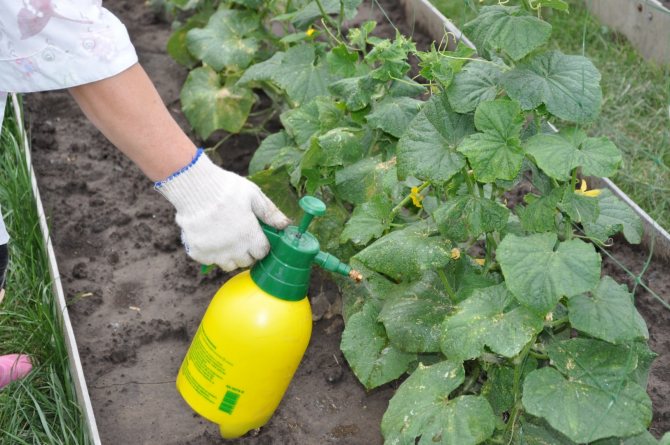

Processing cucumbers with brilliant green and iodine
Secrets of increasing the yield of cucumbers
- In order for the ground to warm up faster in spring, it should be covered with black material.
- A small greenhouse or arc tunnel can protect cucumbers from the cold.
- If there is not enough space on the site to grow a crop, it can be planted in barrels. For such a planting, varieties are used that have a strong climbing ability.
- Growing cucumbers on trellises will make it easier to care for and collect vegetables, as well as save space in the garden.
- Watering is best done early in the morning. By the evening, the ground overheats, cold water can damage the roots of plants.
- The largest harvest can be obtained at the beginning and at the end of summer. Because cucumbers only need 12 hours of daylight to grow well.
- It is important to huddle the cucumbers so that the plants can develop additional roots as well as protect the stem from fungus.
- To increase the formation of female flowers, watering is reduced before flowering. The bush activates the growth of flowers to avoid death.
- Experienced gardeners are advised to remove the very first ovaries. At the time of their formation, the plant has a fragile root system, therefore, after the procedure, it will direct its forces to strengthen the bush.
Growing cucumbers is not an easy task. But with the right approach to agricultural technology, you can grow cucumbers in a greenhouse, a greenhouse, in the open field, and even on a balcony or on a window in a house. To increase the number of fruits, you should pay attention to productive hybrids, know when the plant needs to be watered and fed. Then cucumber bushes will delight you with a rich and tasty harvest.
Lash formation
The purpose of formation is to stimulate the formation of new shoots, since it is on them that female flowers are formed, giving ovaries. The main lash is pinched after the 5th, and the rest - after the 3rd sheet. It is necessary to monitor the number of shoots - if there are too many of them, then the plant will not be able to nourish all the ovaries. Moreover, the bush will weaken, and this in turn will lead to the risk of contracting diseases.
Cucumber hybrids and some varieties do not require pinching the main whip, because most of the flowers that form on them are female.

